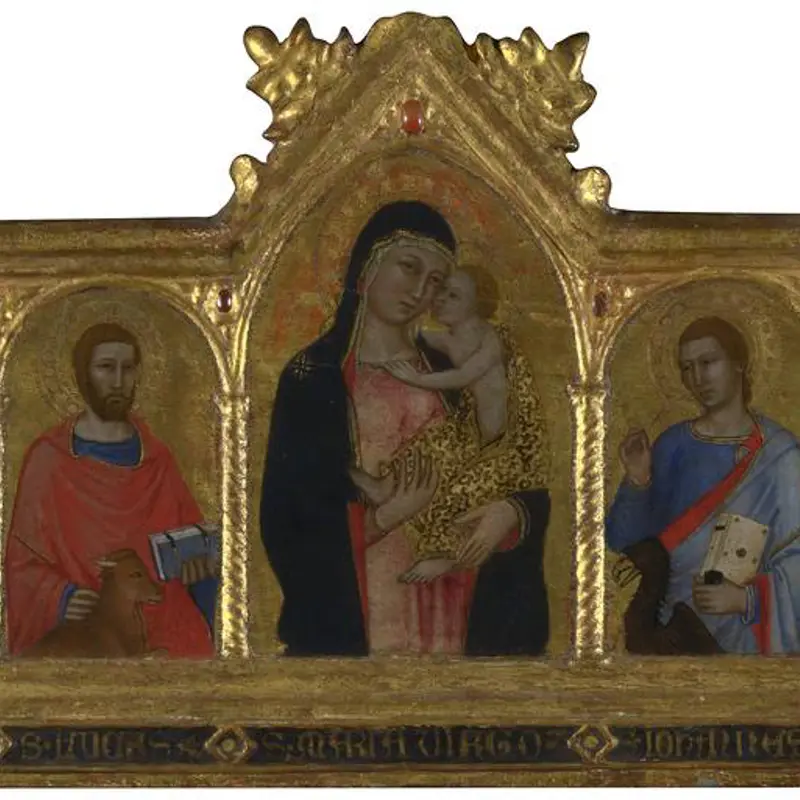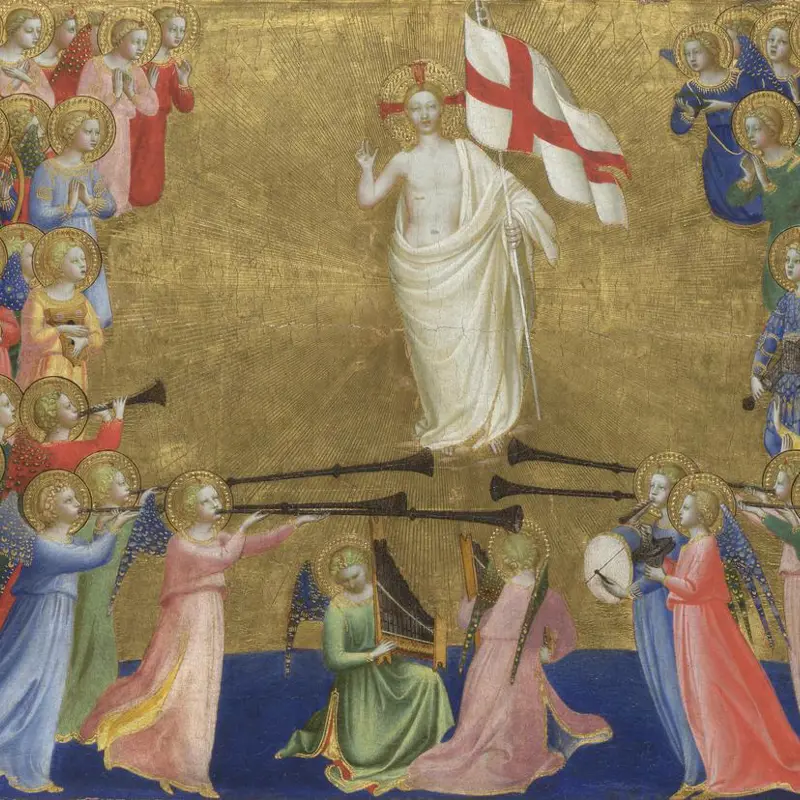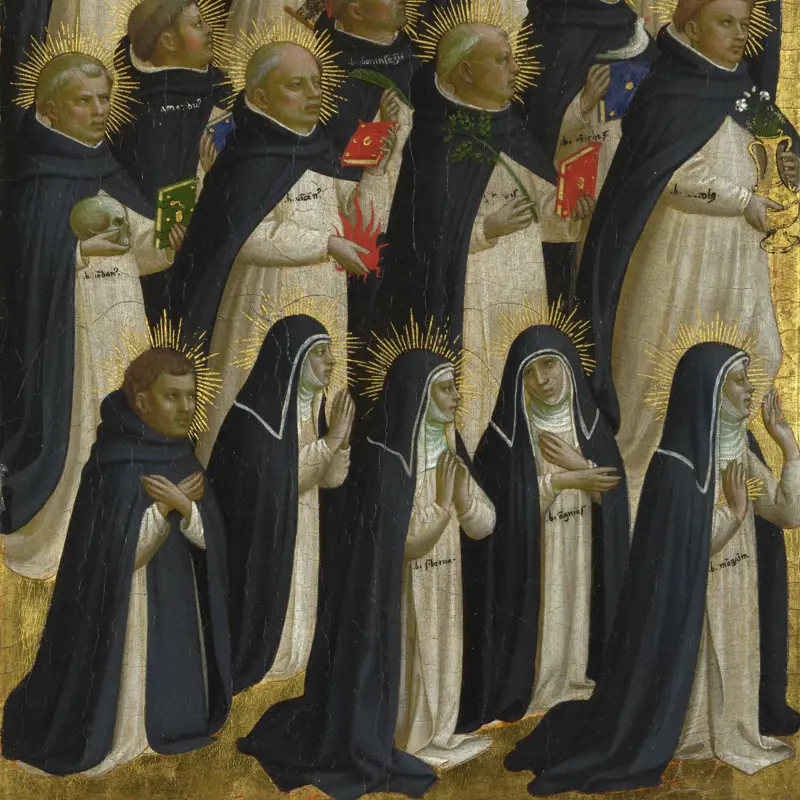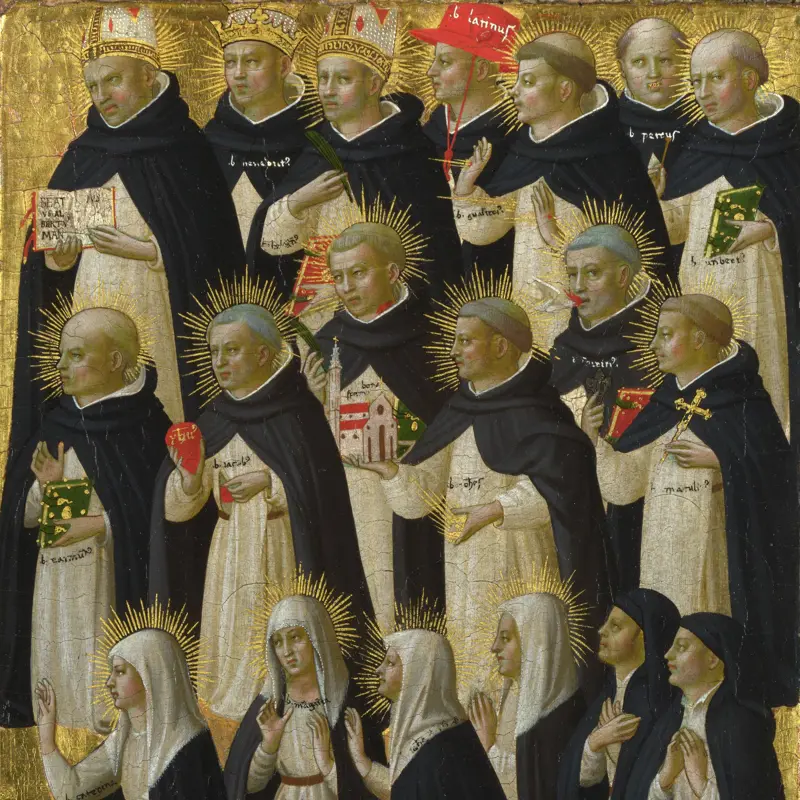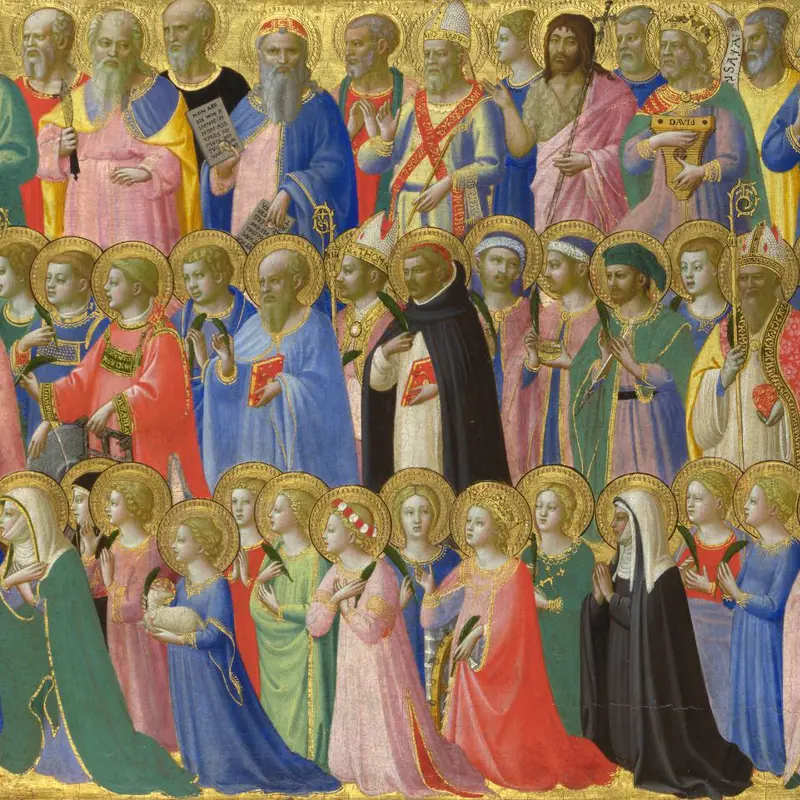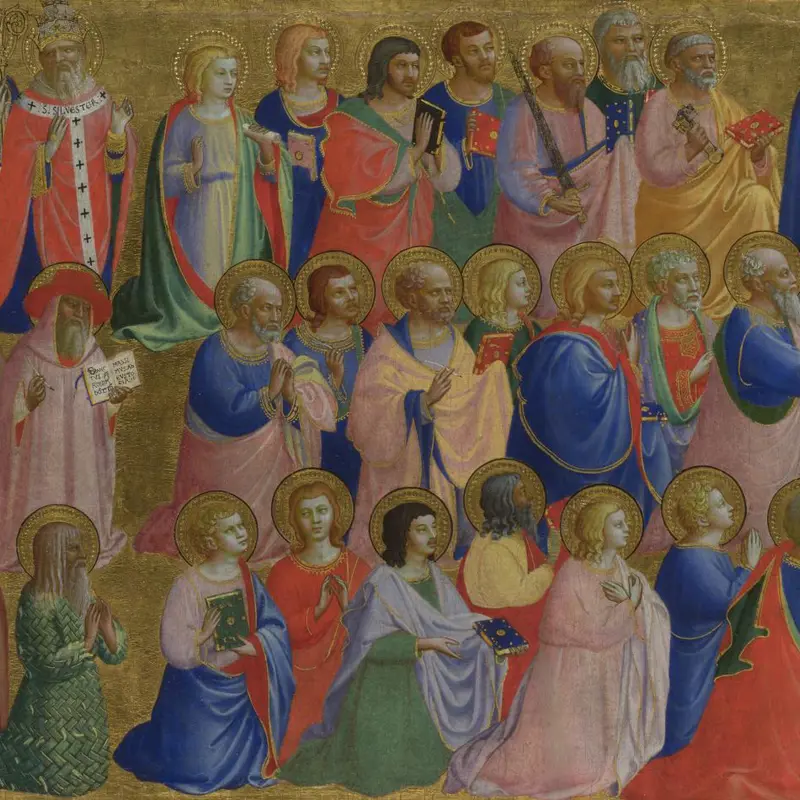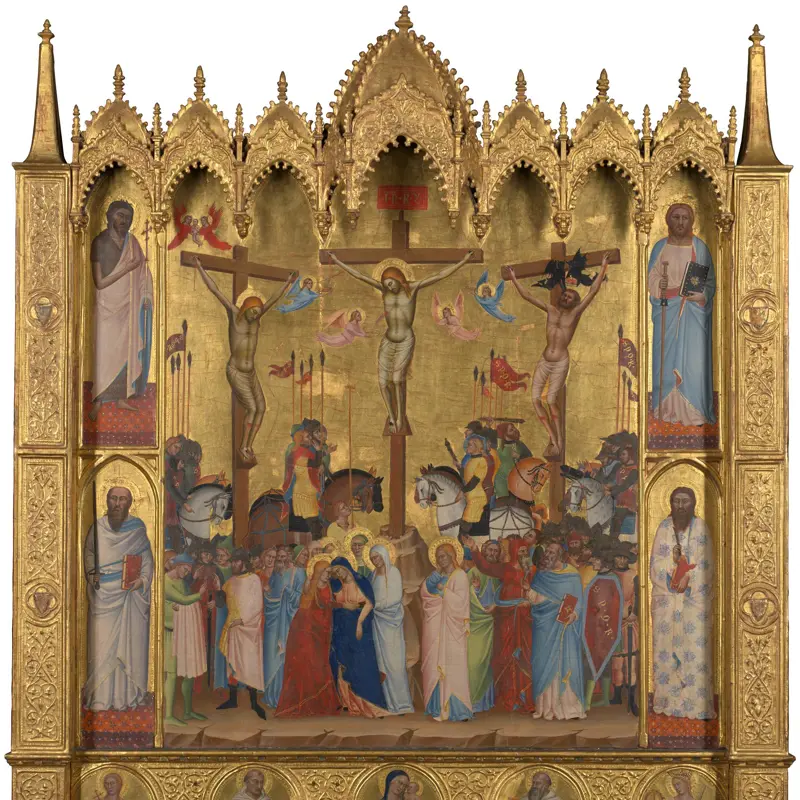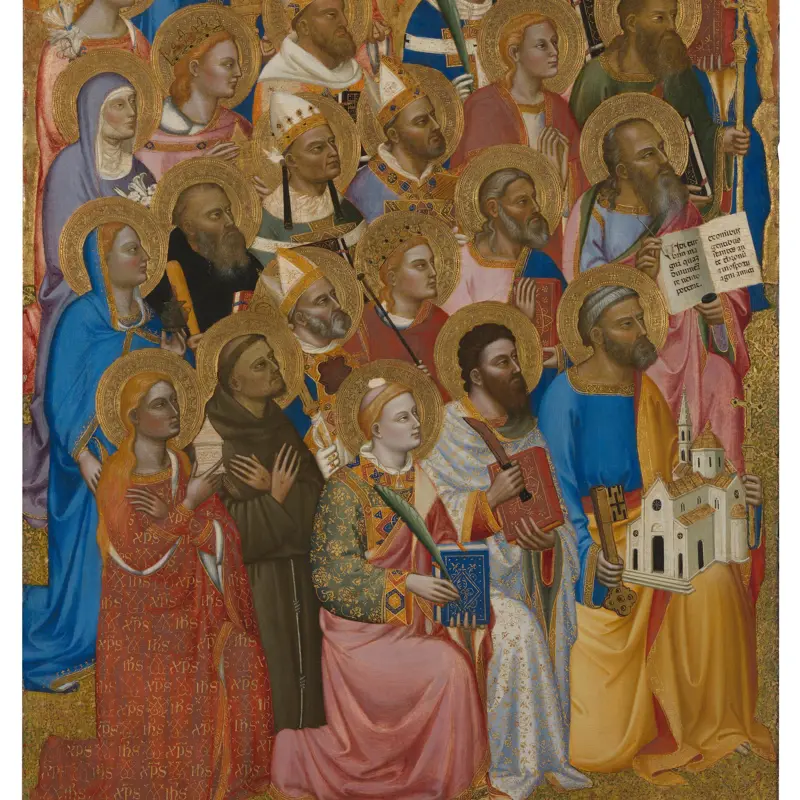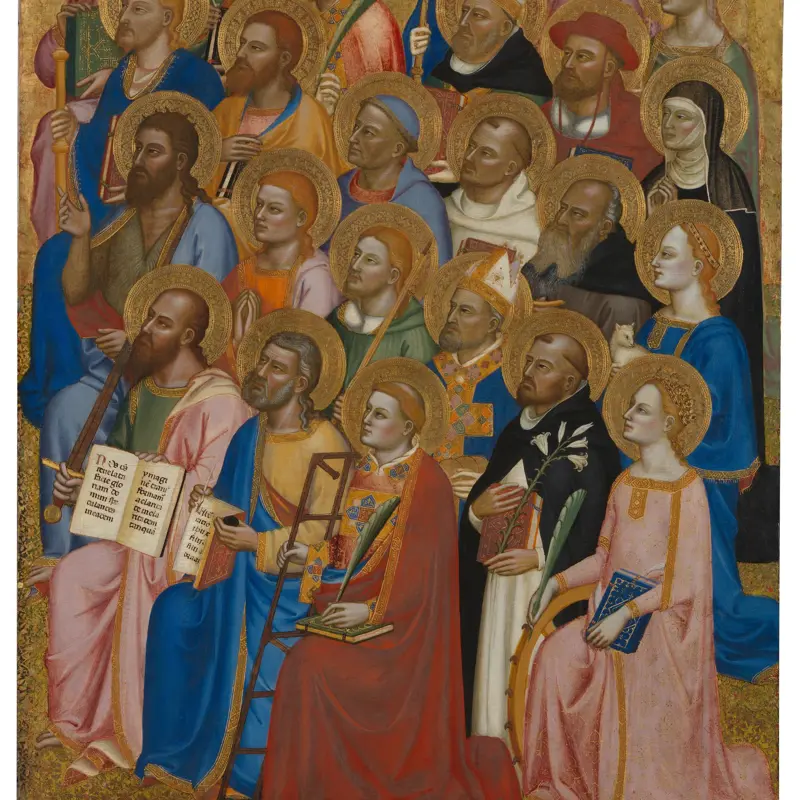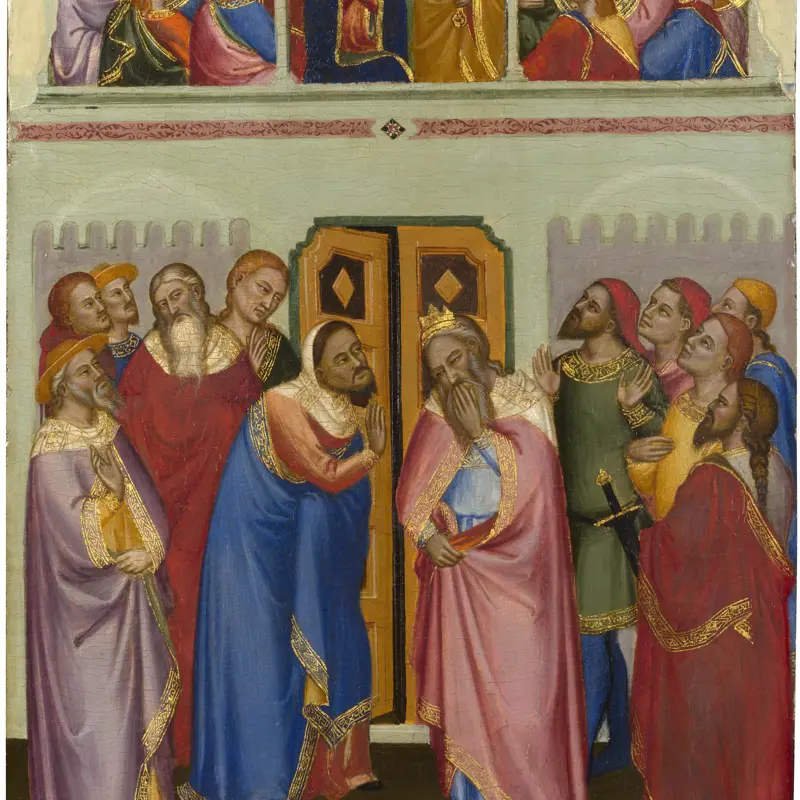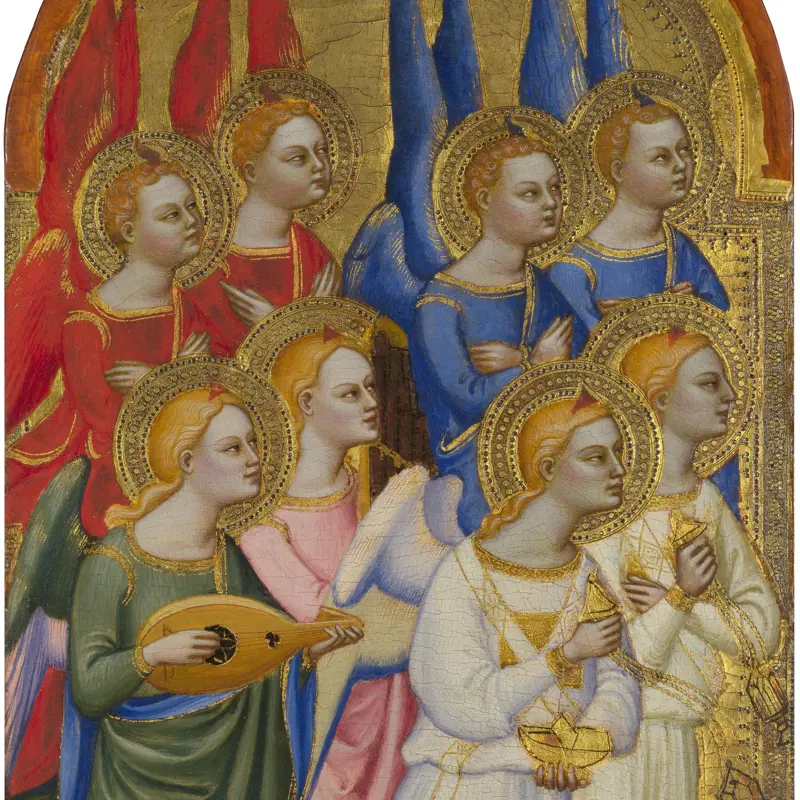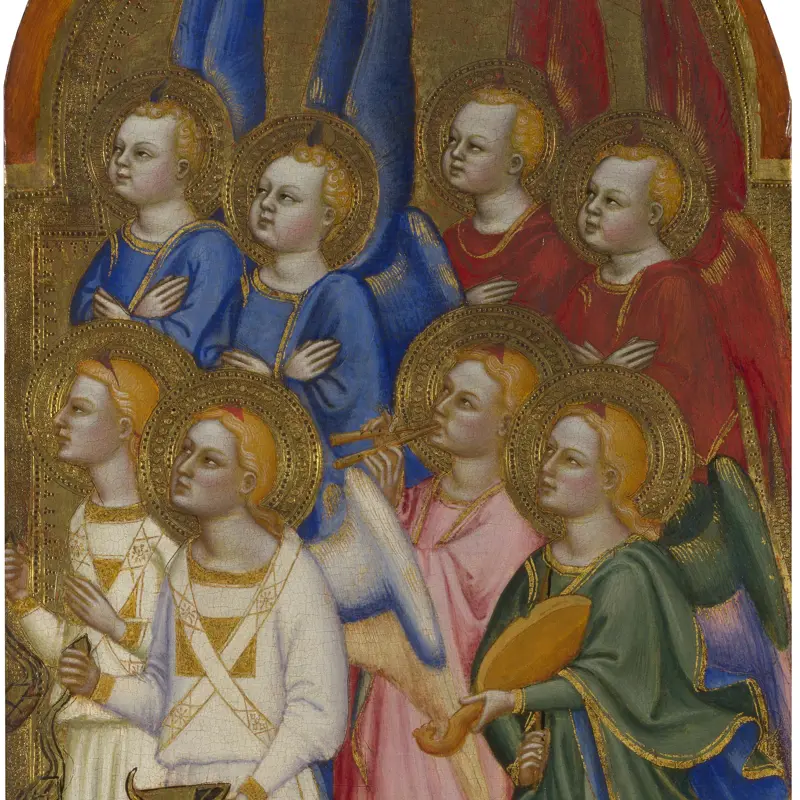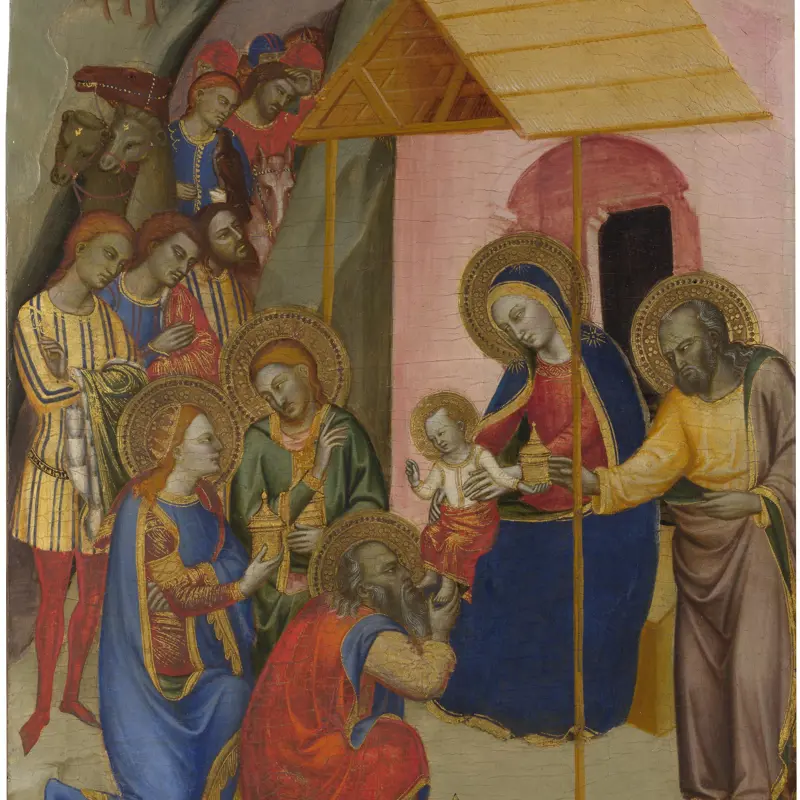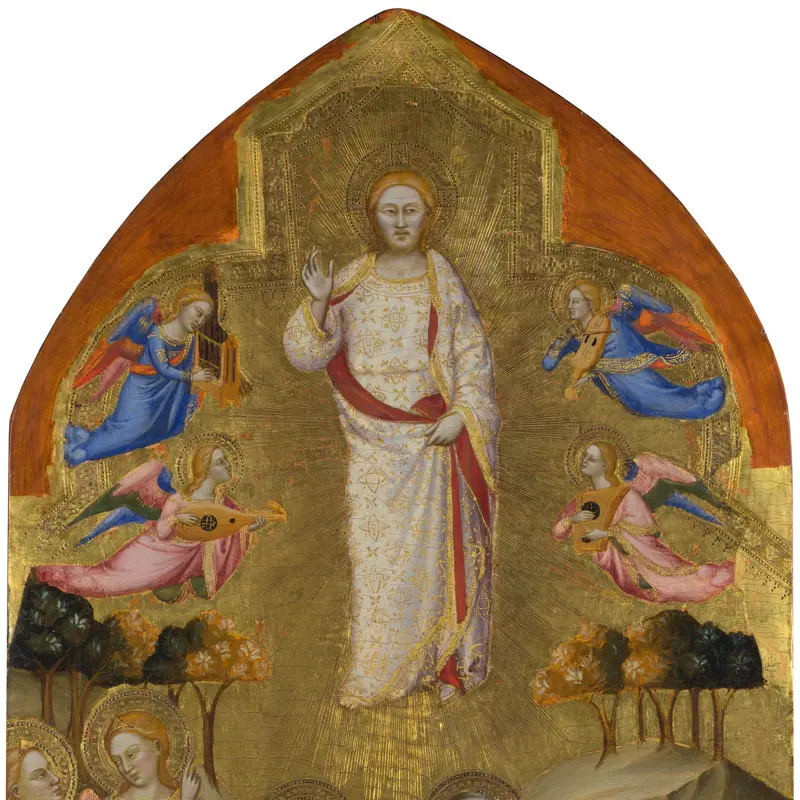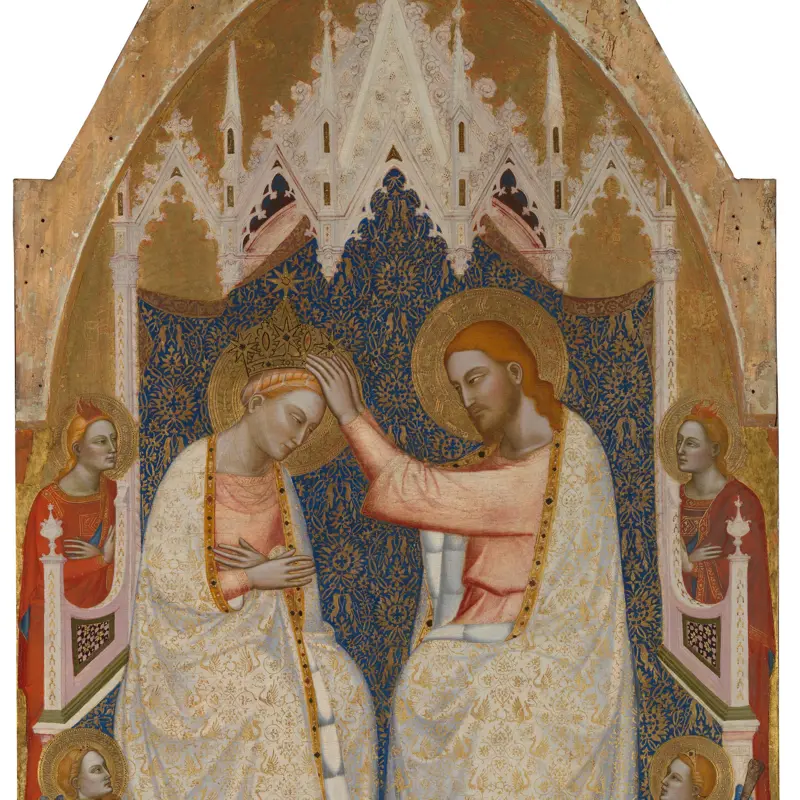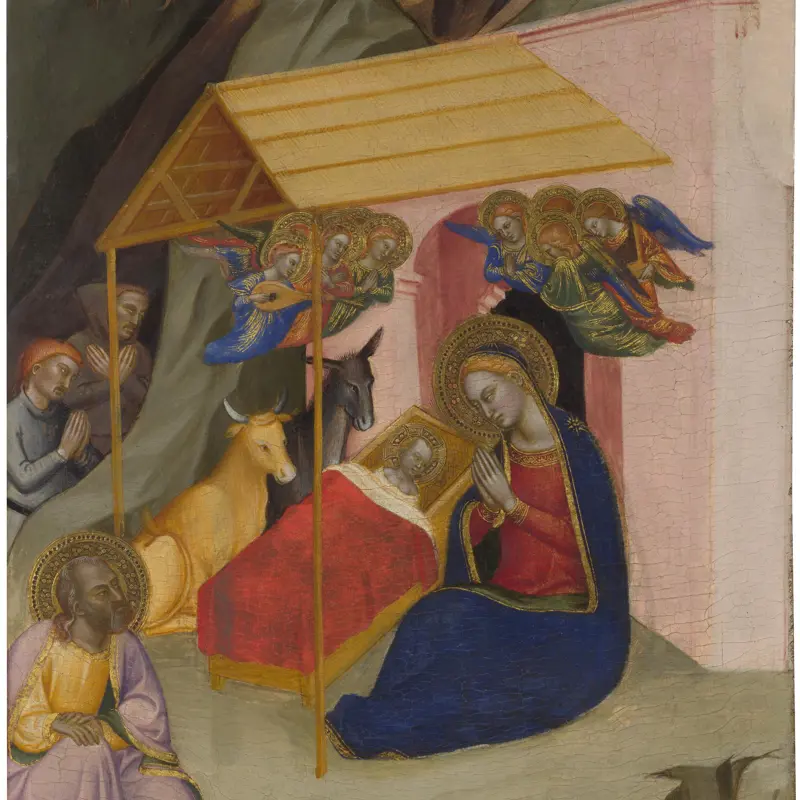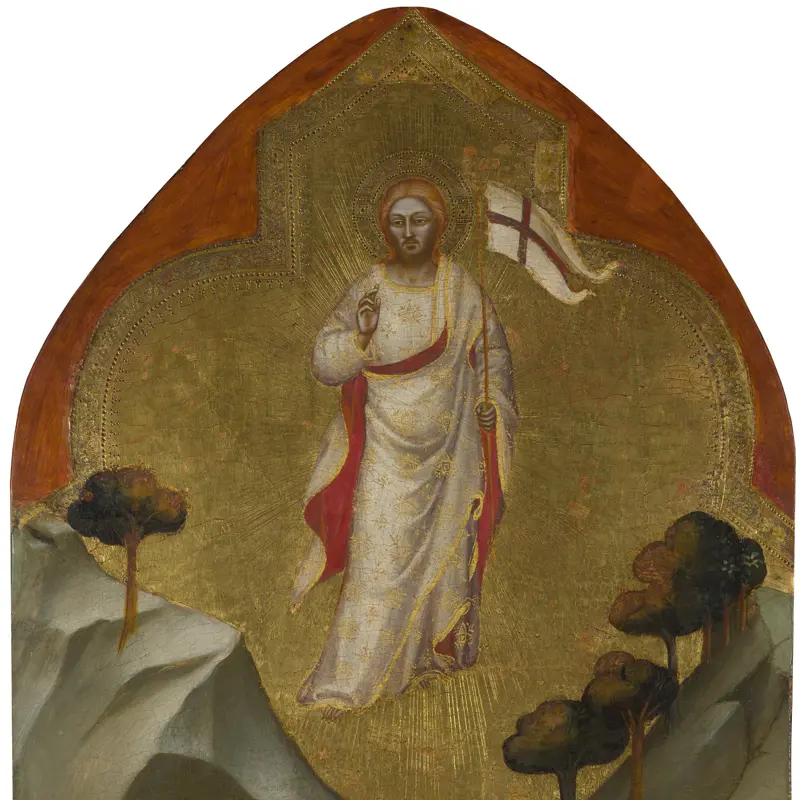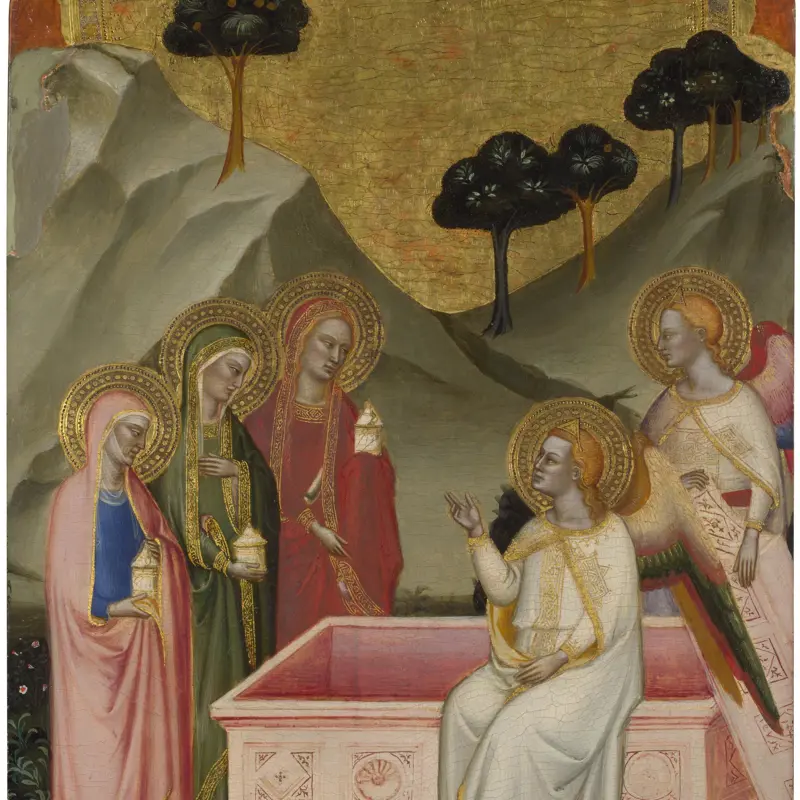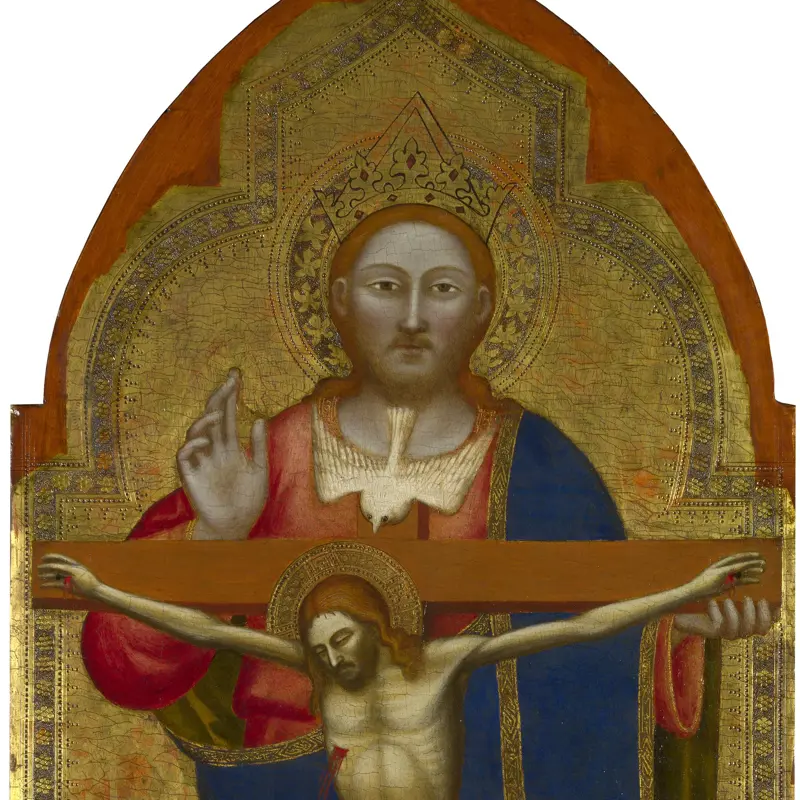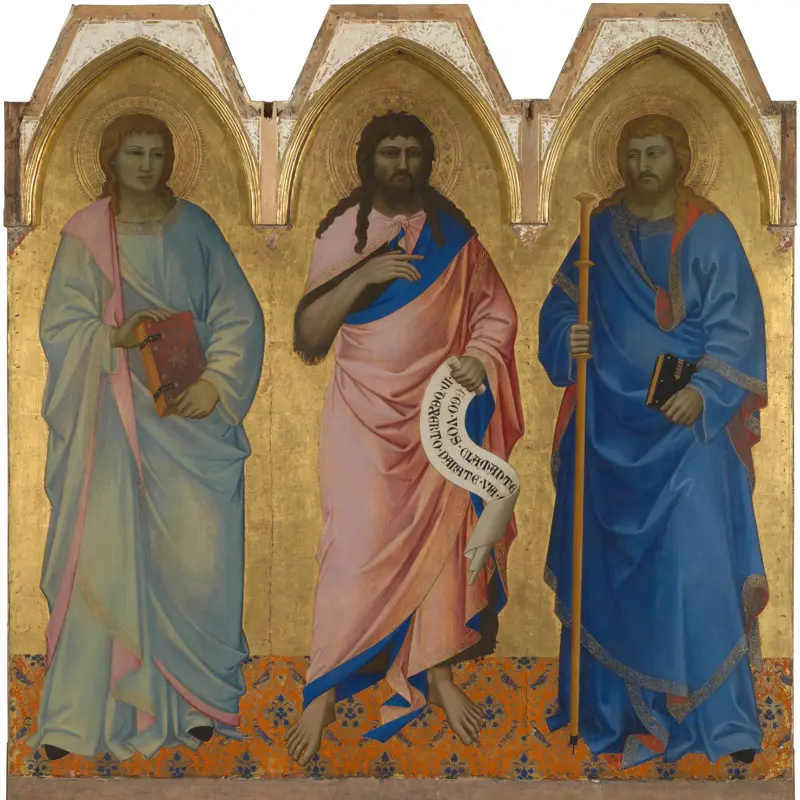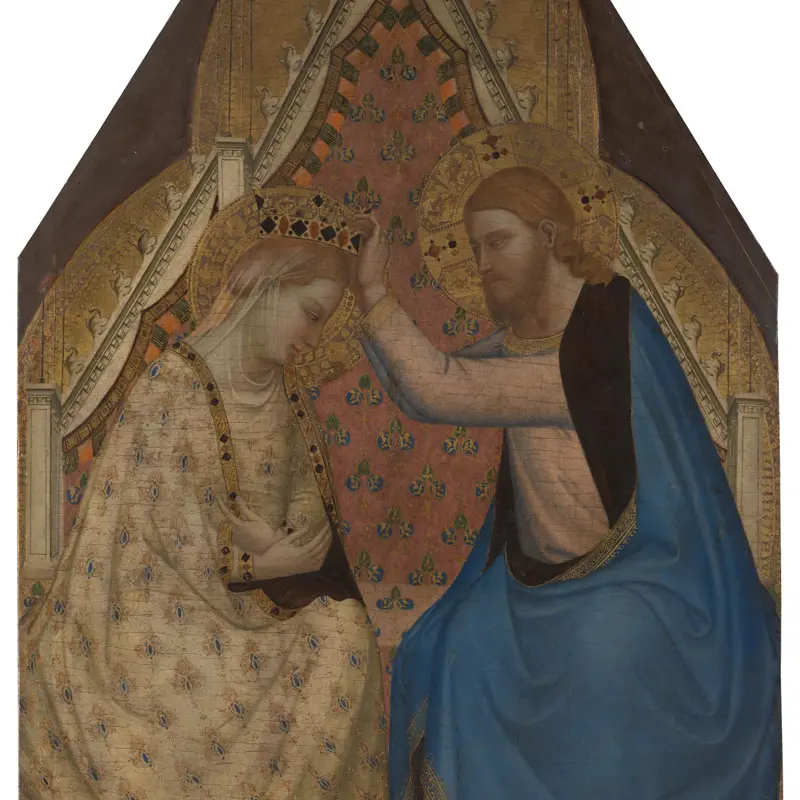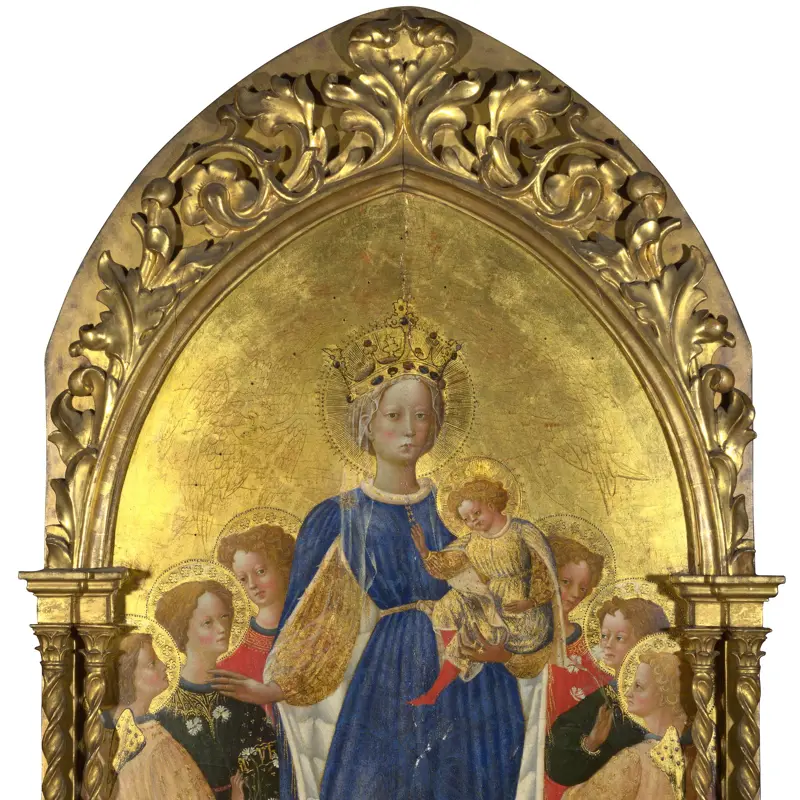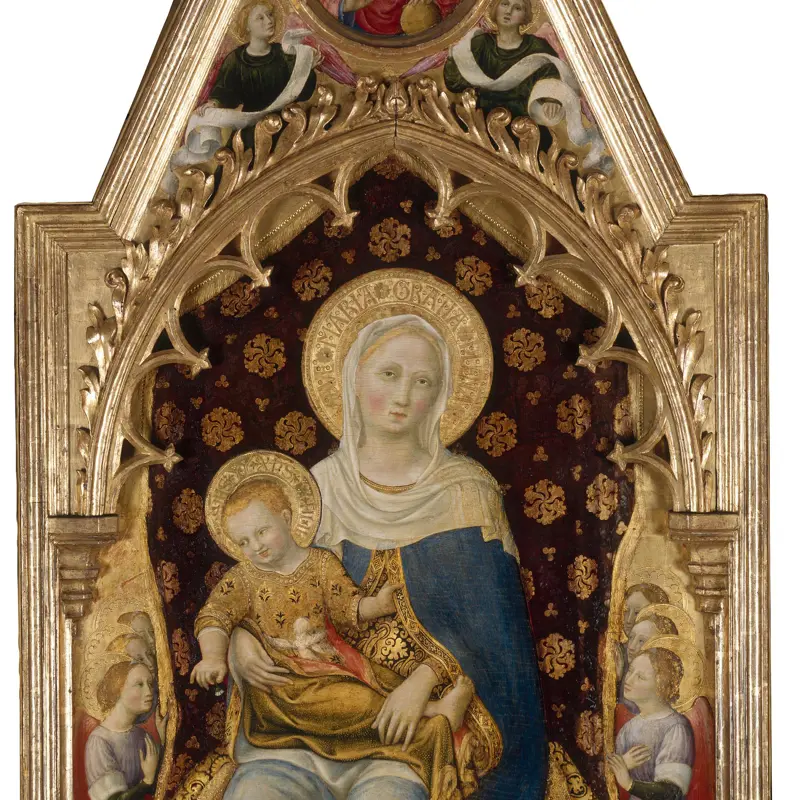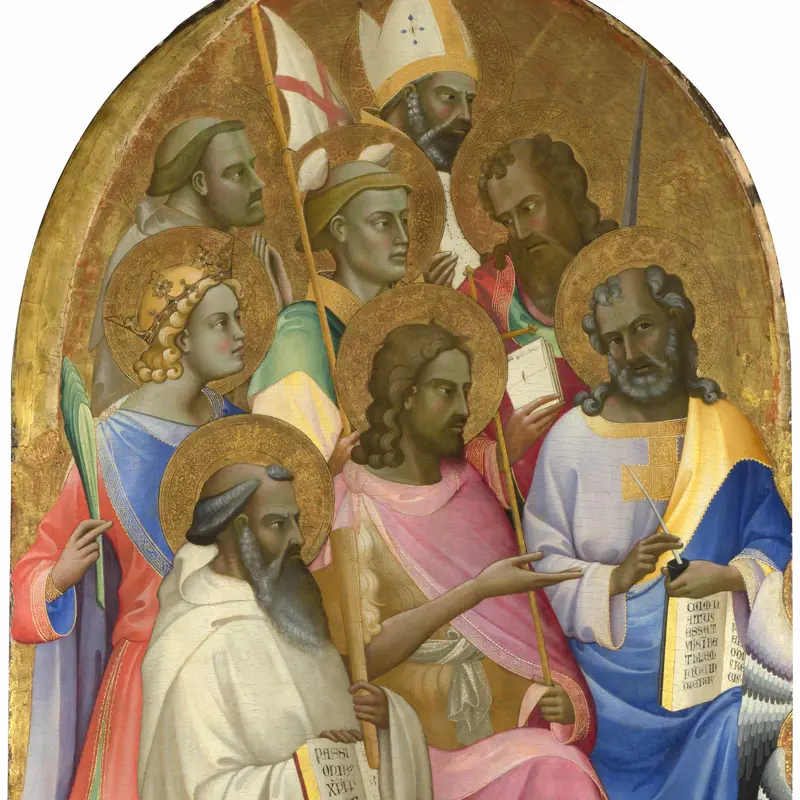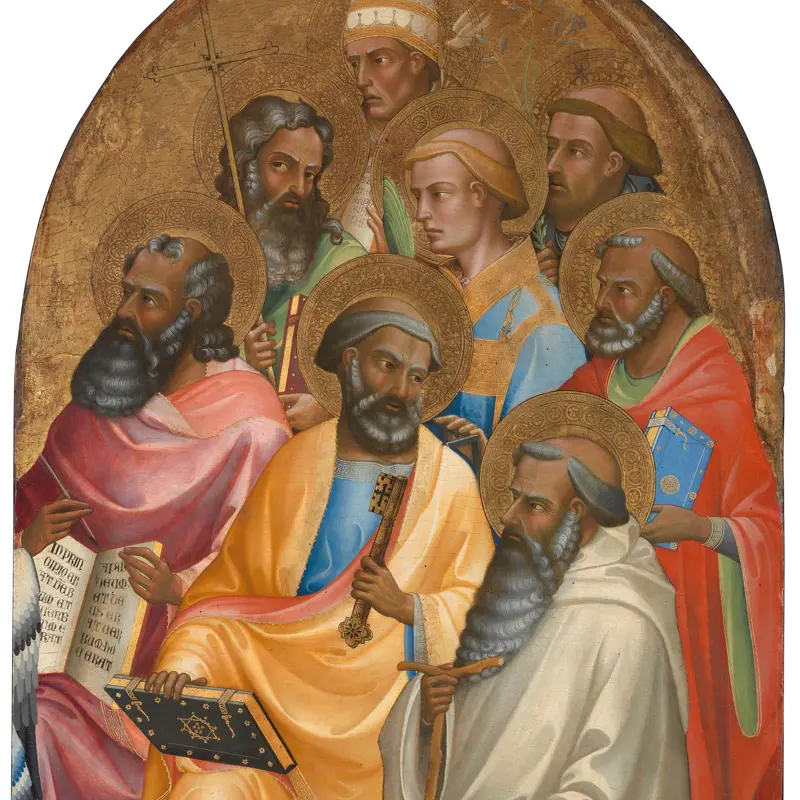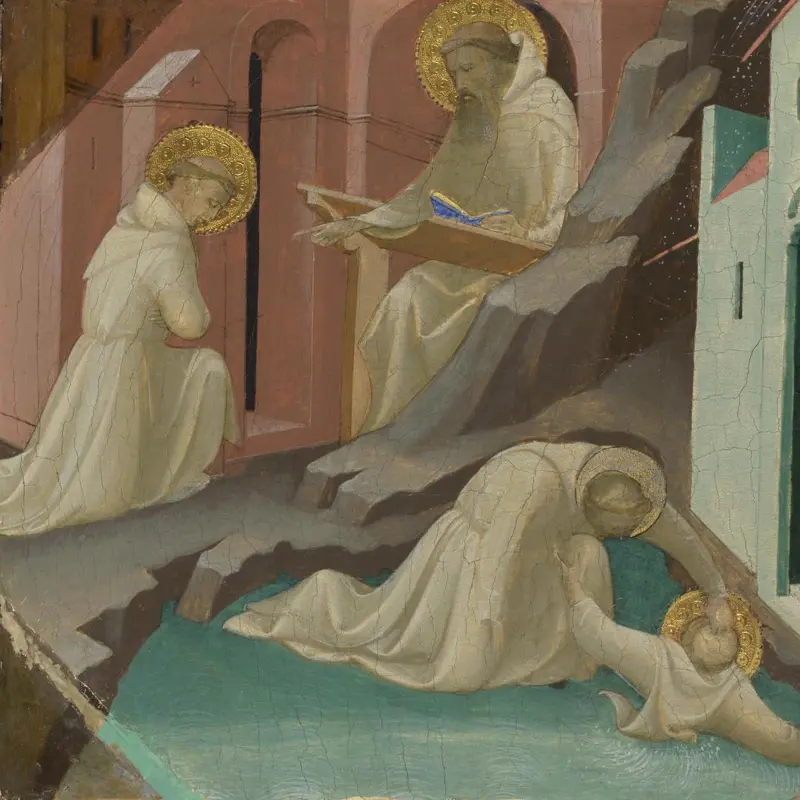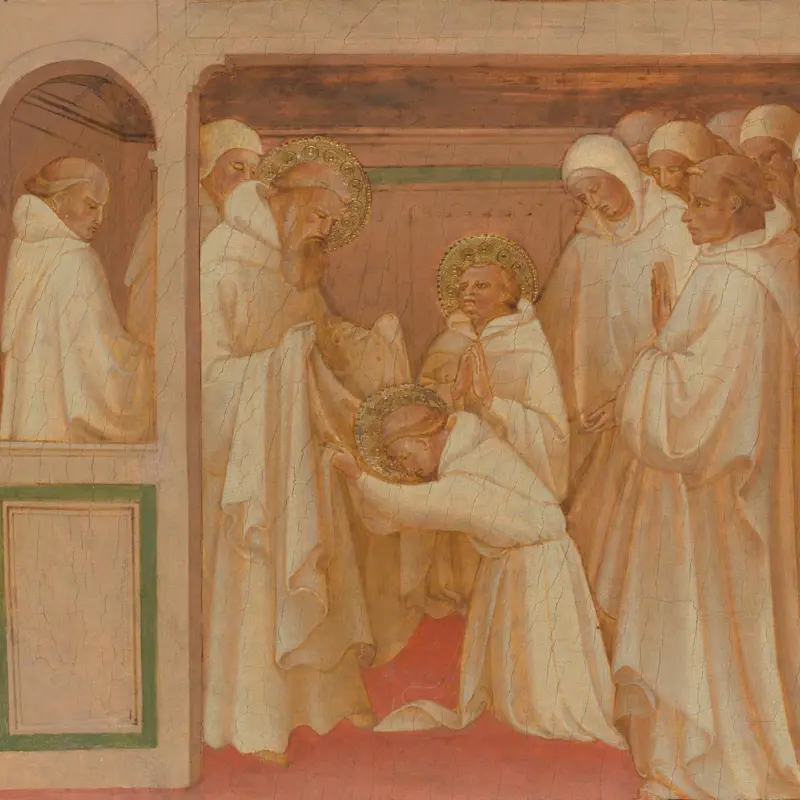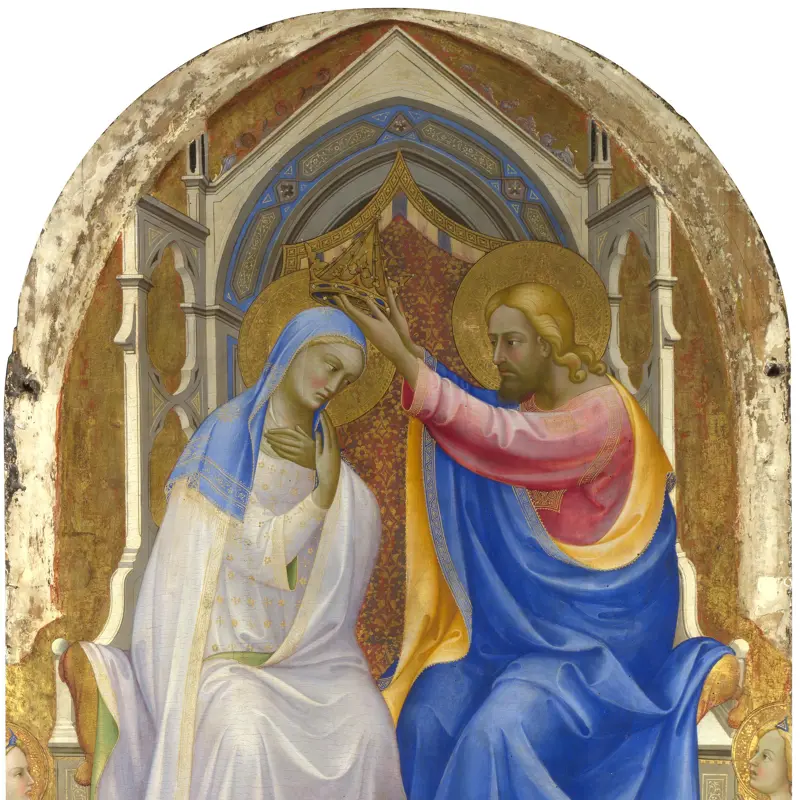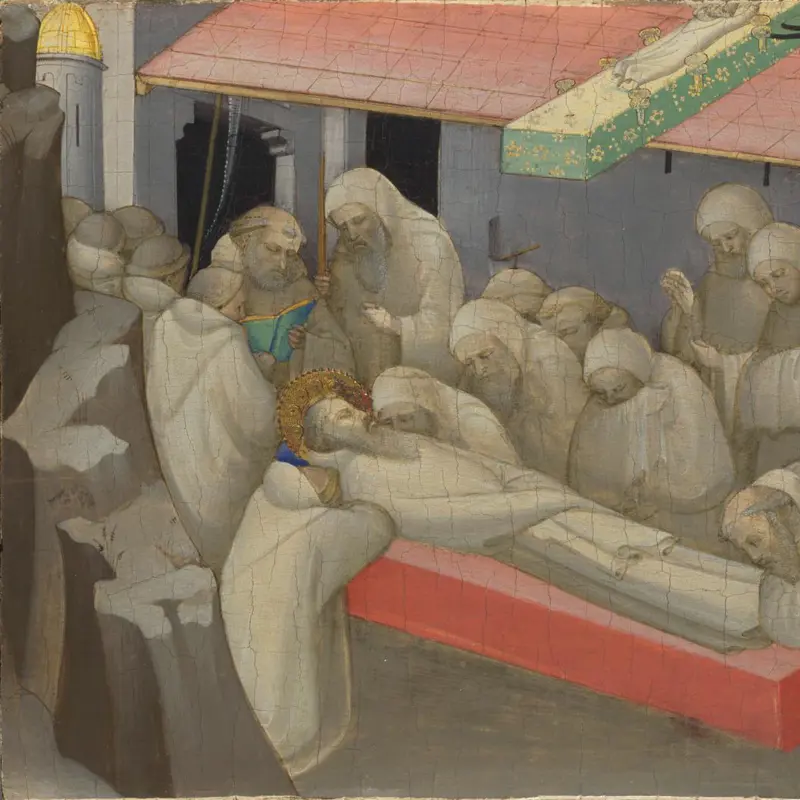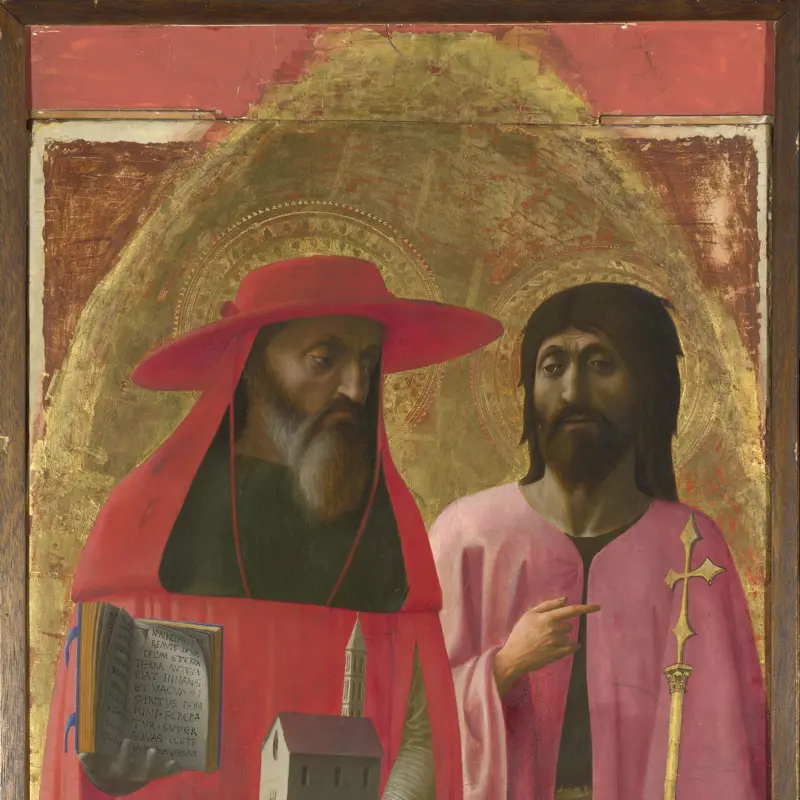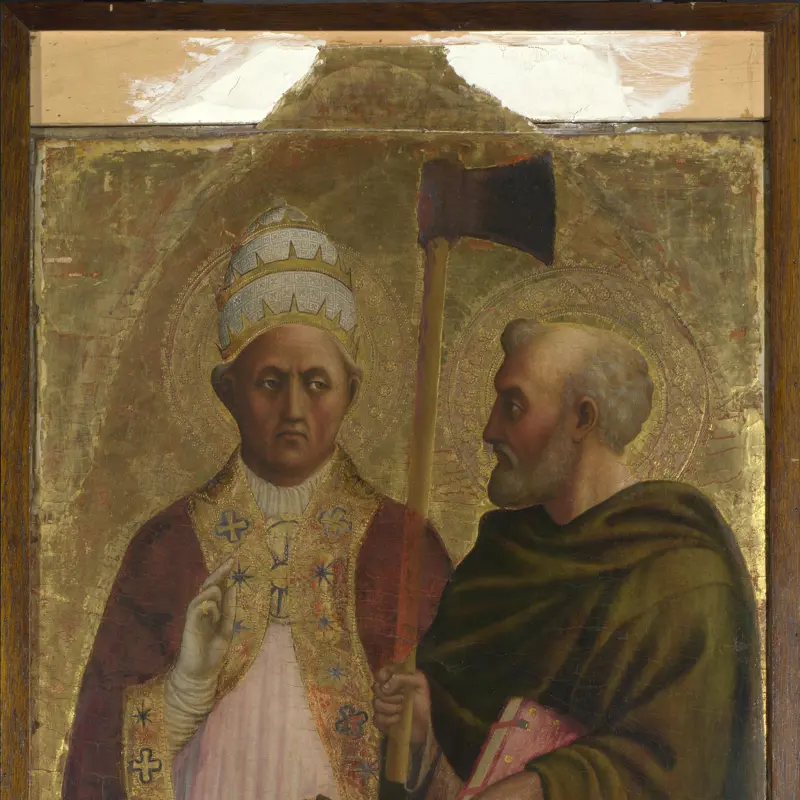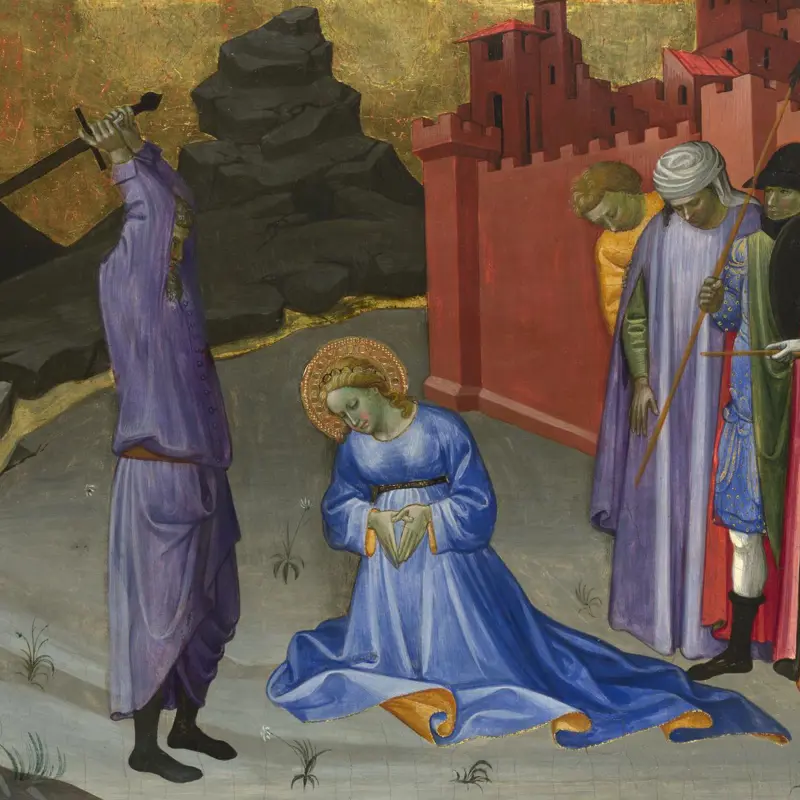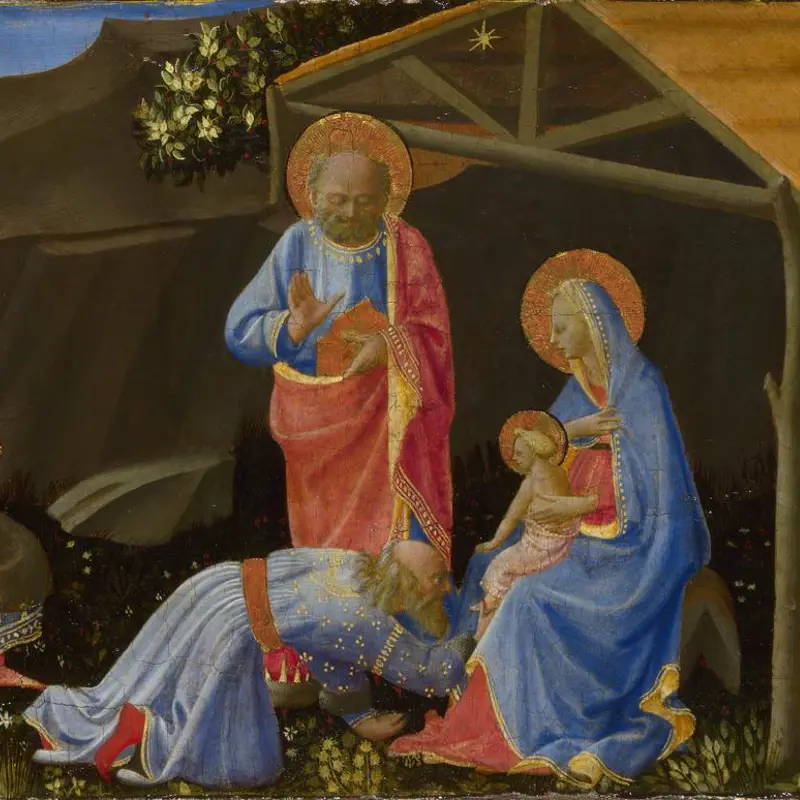Standing on the altars of churches, family chapels and convents, altarpieces provided a backdrop for the sacrament of the Eucharist, a Christian rite that celebrates Christ’s sacrifice. They were commissioned by a wide variety of patrons, from wealthy private citizens and high-ranking clerics to religious institutions and corporate groups, such as guilds.
In late 14th-century Florence, the Gaddi and Cione family workshops produced altarpieces of all sizes. These ranged from towering multi-panelled ensembles such as the San Pier Maggiore polyptych to smaller-scale objects like the intricate Crucifixion altarpiece. However, not all workshops were family-run. In later generations, two of the city’s most successful painters were ordained members of religious orders. Lorenzo Monaco (‘the monk’) painted the Coronation of the Virgin for his own Camaldolese order, while Fra Angelico also worked extensively for his Dominican community.
Artists born and trained elsewhere moved to Florence to obtain altarpiece commissions. Giovanni da Milano spent most of his career in Florence, and when the painter Gentile da Fabriano worked briefly in the city, his ornate altarpieces proved very influential. Some of Florence’s painters also travelled widely, such as Gherardo Starnina who undertook commissions in Spain.


